It’s been a while since I last pruned some young quince and crabapples I’ve been growing from seed. By pruning in summer I can encourage them to produce new growth that I can wire in fall.
Here’s a six-year old crabapple that I’m growing to be a shohin-sized tree.
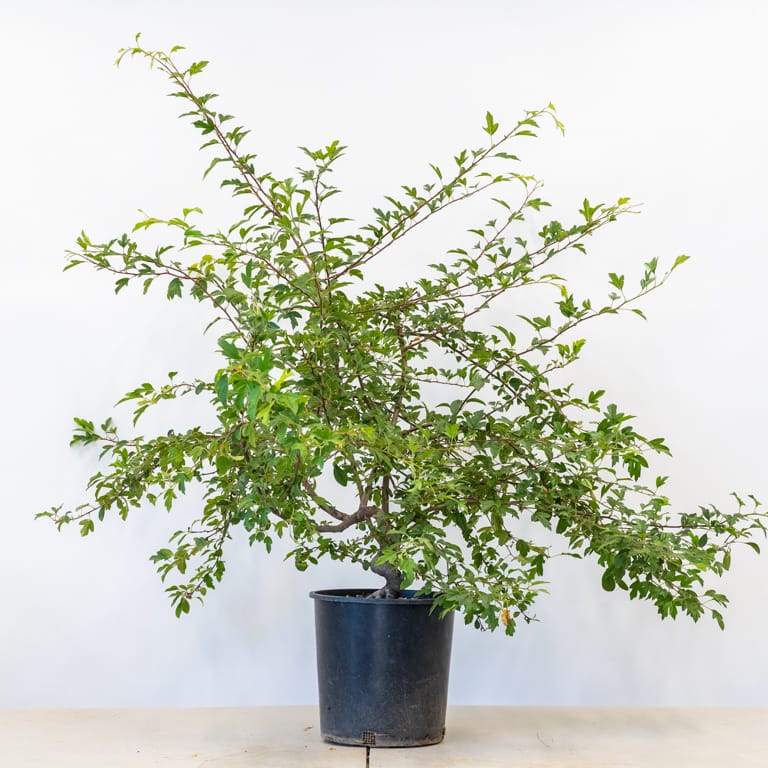
Siebold’s crab
The trunk is close to the desired thickness so I removed several of the sacrifice branches.
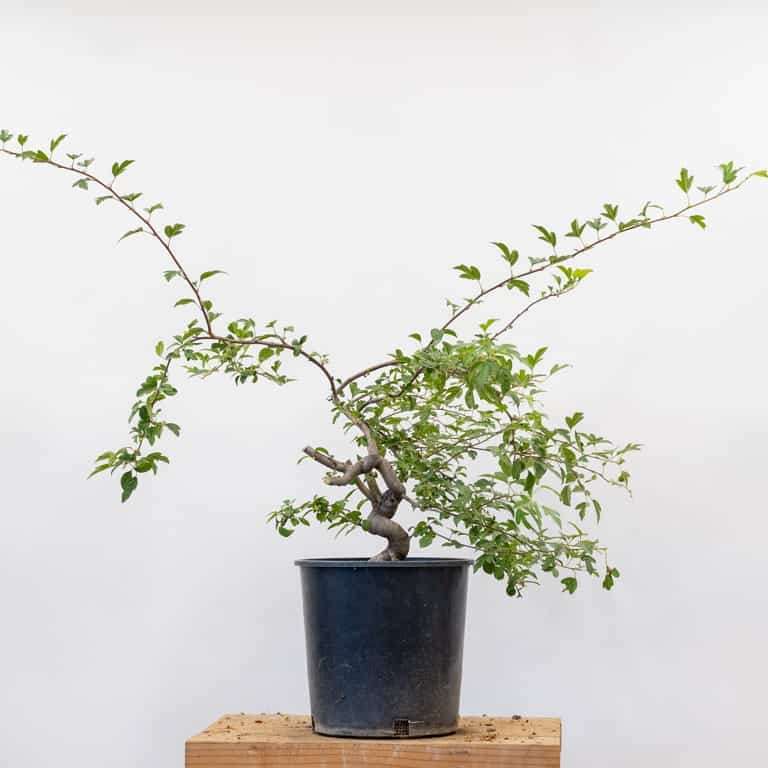
After pruning
I left a single long branch to maintain the tree’s vigor through the rest of the growing season.
Here’s a close-up of the trunk.
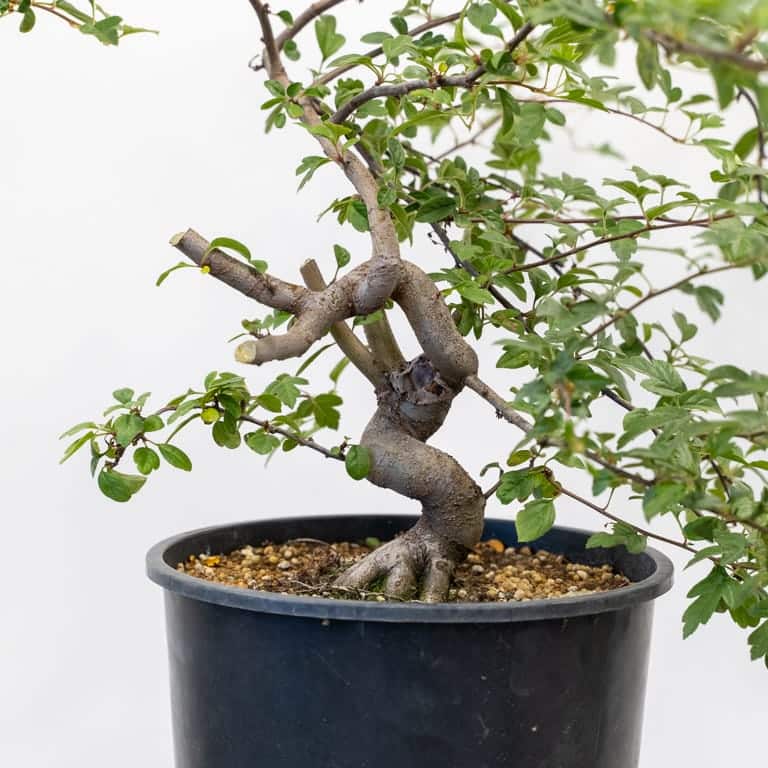
Trunk detail
I did similar work on a crabapple that will likely become a kifu-sized bonsai (20-30cm/8-12″).
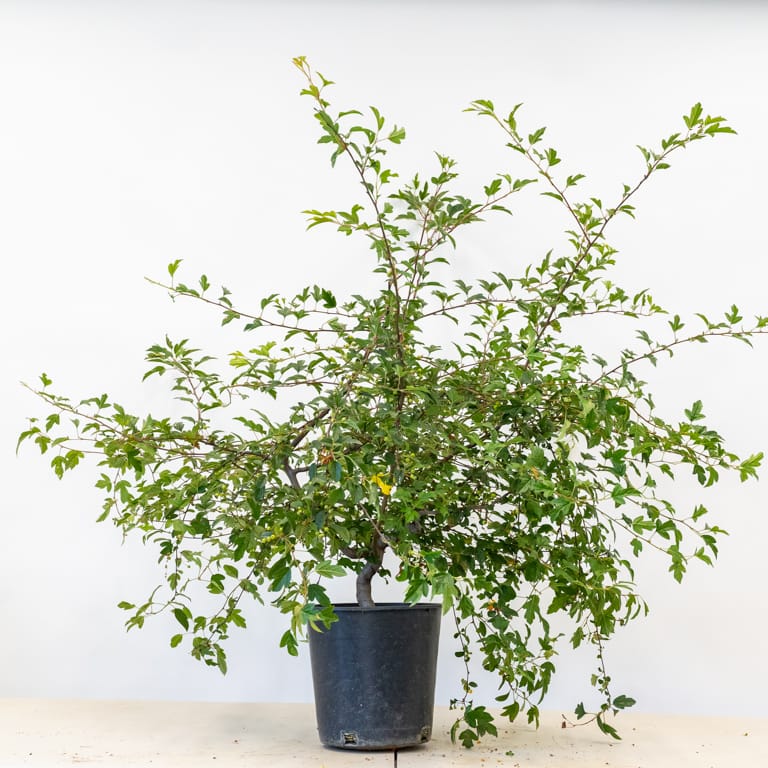
Before pruning
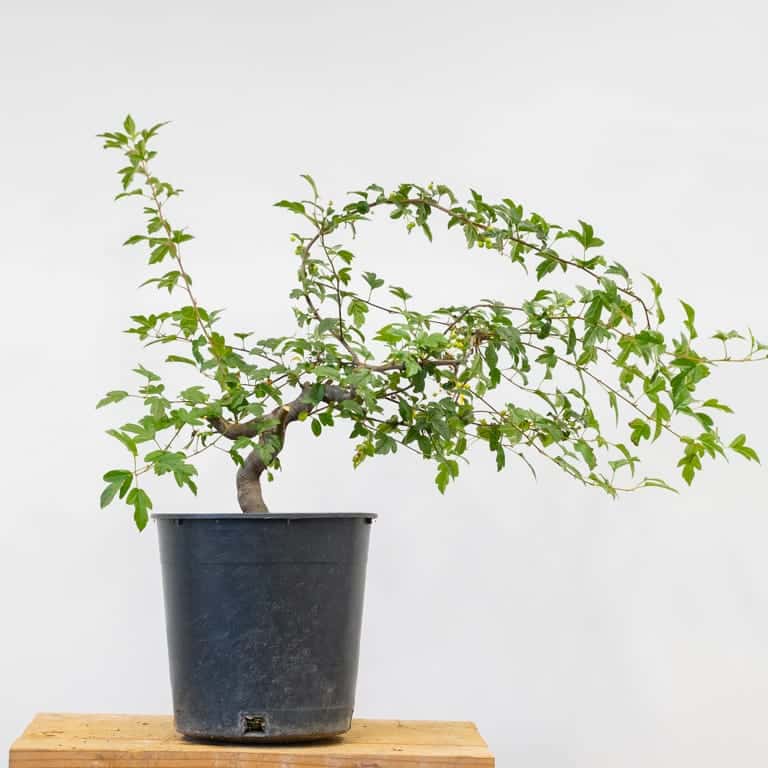
After pruning
I treated the wounds with cut paste and returned the trees to a sunny spot in the garden where they can grow freely for the rest of the growing season.
I did similar cutback on several Chinese quince.
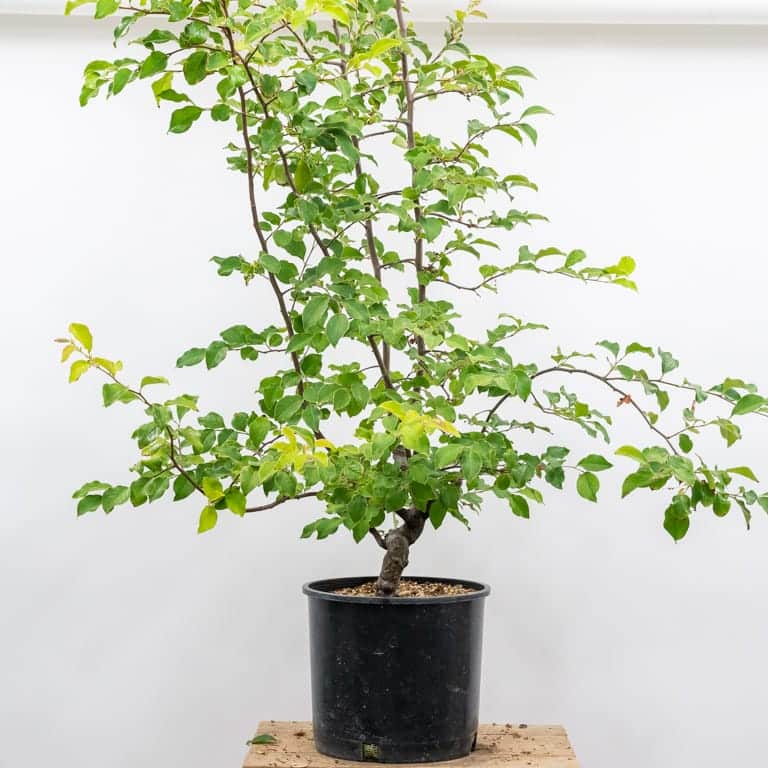
Seven-year old Chinese quince
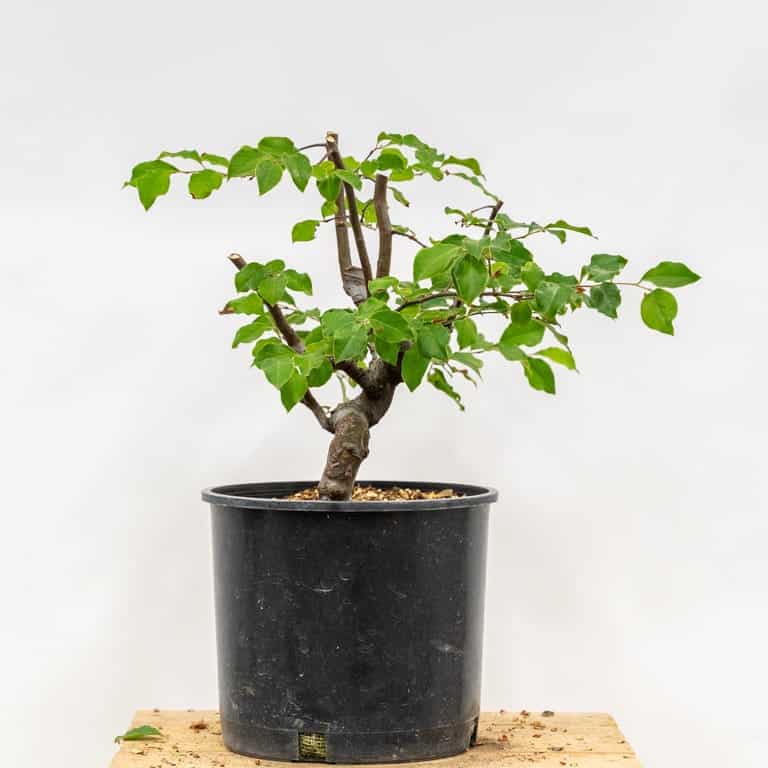
After pruning
I usually leave small stubs when I prune sacrifice branches, but I thought I’d try leaving some green growth on the pruned branches to see how that effects budding. If I don’t get new shoots along the trunk I’ll prune the tree back further in fall to encourage new shoots in spring.
Here’s another tree that I pruned the same way.
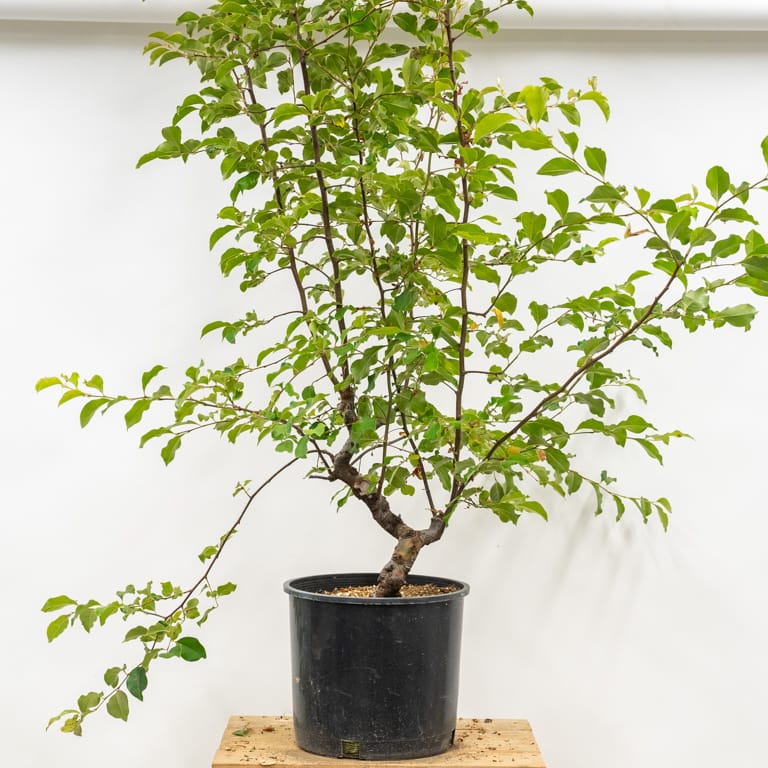
Chinese quince before pruning
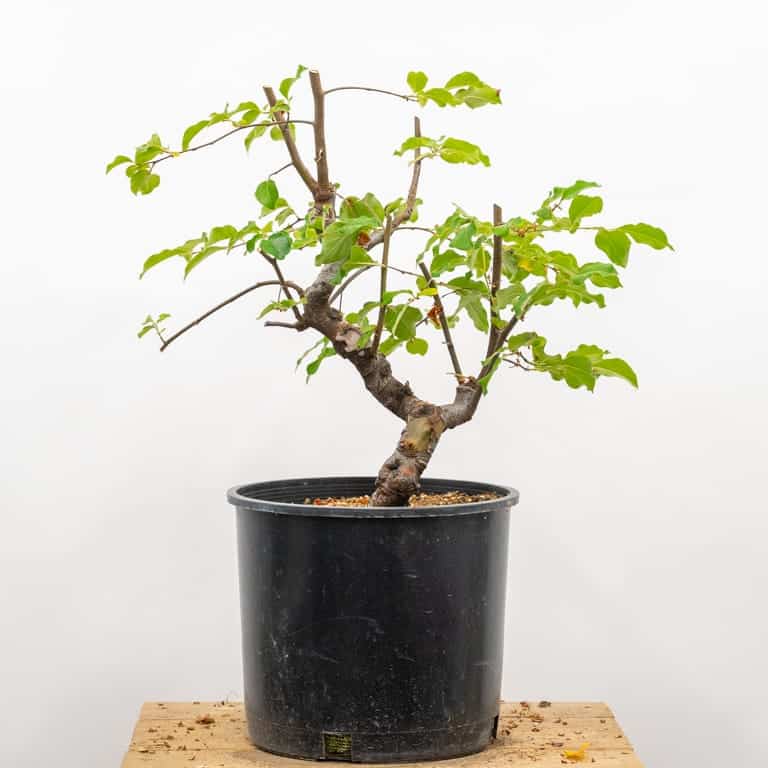
After pruning
I plan for the quince to become either shohin or kifu-sized bonsai like the crabapples. When the curves in the trunk are tight I can aim for shohin and when they are bigger (as in the two above examples) I can aim for kifu or chuhin-sized trees (up to 45cm/18″).
Subscribe to Bonsai Tonight
New Posts Delivered Every Tuesday and Friday
Richard Powell says
You do amazing work.
Jonas Dupuich says
Thanks, Richard!
Steven Hamari says
Jonas, when we chop back to create shohin size, how do we ensure the small internodes in the spring that we will need to form the new branches?
😎
Jonas Dupuich says
Hi Steven! When it’s time to start building branches with small internodes, it’s best to slow the tree down and create less vigorous branches. There are different ways to do this with different species. For Chinese quince the first internodes are generally short, right at the branch collar. I haven’t done as much refinement with crabapple, but with plums or ume (which are similar) I try to keep more branches than I need to slow shoot growth and sometimes I’ll prune one internode past the internode I want to keep and either hope both internodes grow or cut further back when the tree has slowed down a bit.
Josh says
I see you’ve left branches of various length on different trees. Do you have a method for deciding when to leave the full extension vs pruning everything back or is it more intuitive?
Jonas Dupuich says
I cut back to one or two side shoots per branch to keep the sap flowing through the area. I don’t know how the trees will respond to this so I’ll be curious to see how they grow over summer.
Cynthia Martin says
I would so appreciate a little coaching on my deciduous crepe myrtle. I have had it for three years. It began as an upright about 12 inches. It is now 30 inches and majestic. She was accepted in our Tucson Living Art Bonsai Exhibition this year. Very healthy, but I don’t even know what color her blossoms are. Shouldn’t I have had some blossoms? Is it true that pruning in spring will cut off the tips that will produce blossoms the next year? If that is so, How can I ramify my tree and also have blossoms. Thanks so much for all your great educational blogs for us.
Jonas Dupuich says
Hi Cynthia – fall or late winter are good times to prune crepe myrtle as they bloom on the new shoots that develop in spring. If you’re not seeing flowers, it could be the tree is either too young or not healthy enough (or not getting enough sun). If the tree is old enough and is receiving adequate sunlight and fertilizer I’d expect it to bloom sooner rather than later.